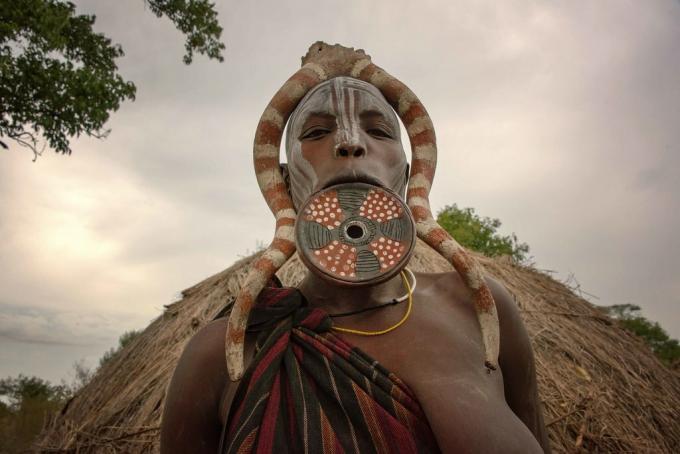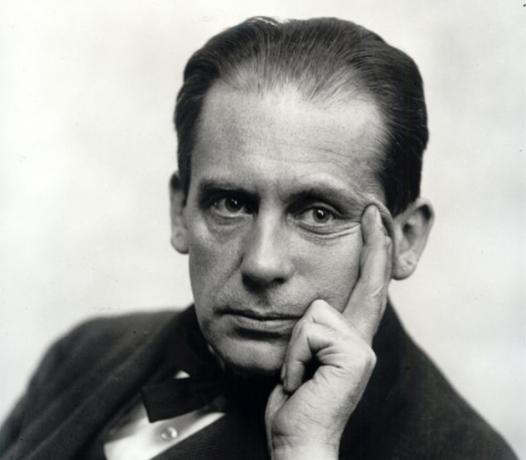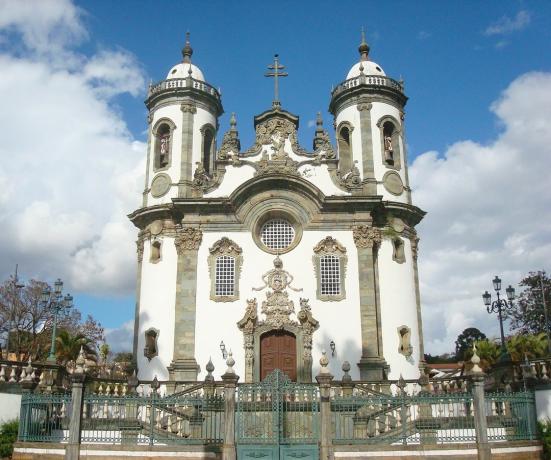African culture is the set of knowledge, beliefs, values and customs of the peoples that inhabit the African continent, which has about 1.1 billion people. As Africa is immense and diverse, it is more correct to speak not of a single culture, but of “African cultures”, in the plural.
Just to give you an idea of such cultural diversity, there are in Africa about 490 different ethnicities, many of them living within the same country. In South Africa alone, there are 11 languages and diverse ethnic groups, including the Zulus, the Xhosas, the Pedis, the Sotos and the Tswanas.
African Traditions
Religion
Despite colonization, traditional African culture persisted. In the religious sphere, the advance of Christianity, especially after colonization, was not able to eliminate traditional belief systems.
About20% of all African population declare themselves adherents of some traditional religion, such as the Yoruba, an ethnic group that occupies part of the territories of Nigeria, Benin and Togo. It was the religion of the Yoruba people, with their worship of the orixás, that gave rise to Candomblé in Brazil.
Many customs or traditions, even among individuals who claim to be Christians or Muslims, come from these traditional beliefs. We can highlight the following:
- Respect for their ancestry and belief that they can intervene in the world.
- Manipulation of forces of good and evil through access to deities (such as orixás).
- Ritual practices, such as sacrifices and prayers, and the use of amulets and talismans.
- Use of traditional healing practices in case of health problems.
- Search for healers and sorcerers.
orality
A fundamental aspect of traditional African culture is orality. Beliefs, rituals, customs, ancestral wisdom – all this has always been passed down from generation to generation through oral language. Oral tradition allowed Africans of many generations to learn from agricultural techniques to religious rituals.
On this topic, it is important to mention the figure of griots, people who fulfill the function of transmitting tradition through speech. Griots are guardians of memory in West Africa. In addition to being excellent orators and storytellers, the griots also play instruments and sing, just like the troubadour poets.
Since we are talking about such a vast and diverse continent, we will mention, by way of example, only some traditions of African ethnic groups:
Wodaabe ritual
One of the most interesting rituals is a kind of male beauty contest practiced by the Wodaabe, a nomadic ethnic group that lives in the Midwest region of the continent. During tribal meetings, young people dress up and are judged by women of another lineage.

Wodaabe men sing and dance during festival in Niger.
The hairstyle of the Himba women
Himba women, a semi-nomadic ethnic group from northwestern Namibia, cultivate a hairstyle based on a cream (otjize) composed of fat, butter paste and red ocher (which is an earth pigment). The aesthetic ritual, which also includes the skin, is performed every morning.

A Himba woman from Namibia.
The Tuareg Veil
Among the Tuareg, a nomadic group that inhabits the Sahel region and the Sahara desert, are the men who wear a veil and a turban. These long blue cloths serve to protect from the sun and sand and are seen as a symbol of masculinity.

Three Tuareg men gathered in the Sahara desert.
Mursi Women's Beauty Ritual
One of the beauty rituals of the Mursi women, an ethnic group that lives in the O’mo River valley, in Ethiopia, is the application of a disc on the lower lip, which can measure several centimeters. The ornament is reminiscent of the botoques, from the Brazilian Indians of the Kayapó ethnic group.

Mursi woman displays her huge labial disc.
Read about the Definition of ethnicity.
Elements of African Culture
Language
A central element of any culture is its language. It is she who carries the identity of a people and through her their knowledge and values are transmitted. However, during the colonization process, both traditional values and the languages spoken by local people were threatened.
Beginning in the 19th century, neocolonialism had profound impacts on the cultures of African peoples. The exploitation of wealth and labor was accompanied by the imposition of the Western way of life and ideas, considered by colonial rulers as “civilized” or “more evolved”.
But the imposition of the colonizer's language did not exterminate traditional African languages. Today, in Africa, there are more than 2,000 different languages. Some of them, by the way, are the product of linguistic exchange with Arabs, Orientals and Europeans.
It is impossible to talk about culture without talking about exchange. And exchange is what characterizes Euro-African languages, such as Creoles and Pidgins, spoken in countries like Cameroon, Guinea-Bissau and Cape Verde. These languages are not considered natural, as they result from the mixture of traditional and European languages.
The most spoken language on the African continent is Arabic, with 170 million speakers, then English, with 130 million speakers. In third place comes Swahili, a language spoken by 100 million people in countries such as Rwanda, Kenya, Tanzania and the Democratic Republic of Congo.
Read about the Afrikaans language.
Art
In relation to the arts, it is difficult to briefly present an overview of African art. Again, what prevails is diversity, whether in popular, traditional or academic art.
Traditional art is still very strong in Africa. Ceramic and calabash paintings, sculpture and painting of traditional themes are important artistic expressions of Africans.
the african masks, many of them exhibited in museums around the world. Some of them have a religious and festive function. One example is the geledé masks, used by Yoruba men in dance rituals.
Read more about African masks.
Another well-known item of African arts is the fabrics, which fell in the taste of many people from other cultures around the world. Famous for their vibrant colors and diversity of styles, African fabrics communicate, among other things, the cultural identity of the person wearing them.

Nigerian women wearing their vibrantly colored fabrics.
Afro-Brazilian culture
African culture is one of the cultural matrixes of Brazil. This is due to the secular trade of enslaved people, which began to arrive in Brazil in the 16th century. Throughout the entire period of slavery, nearly 5 million people who had left Africa arrived in Brazil.
With them came their culture, giving rise to what we call Afro-Brazilian culture, that is, a set of values, beliefs and ways of acting influenced by cultures that came from Africa.
One of the most evident manifestations of the presence of African culture in Brazil is the popular Brazilian Music. Samba, a genuinely national rhythm, is the result of African culture. The afoxé blocks that parade through the streets of Salvador, Bahia, during Carnival are another important manifestation of African culture in Brazil. Maracatu and capoeira are also cultural expressions whose origin is due to African influences.
At cooking, this influence can be seen in the use of seasonings and ingredients (such as palm oil) and in typical recipes such as acarajé, vatapá and angu.
Another important contribution of African culture in the formation of Brazilian culture is the religion. Candomblé and Umbanda are religions that emerged in Brazil from the influence of African religious traditions.
Some orixás, deities of Yoruba origin, are worshiped even by adherents of other religions and have become true national symbols. The most emblematic case is Yemanja, orixá of salt waters and queen of the sea, whose cult is quite popular throughout the Brazilian coast.
Read more about Afro-Brazilian Culture.
See too:
- Meaning of Culture
- Definition of Afrodescendant
- meaning of multiculturalism
- Meaning of Cultural Diversity



